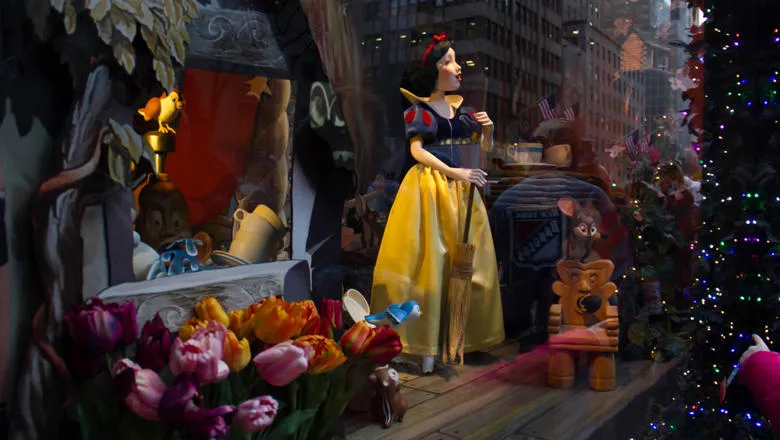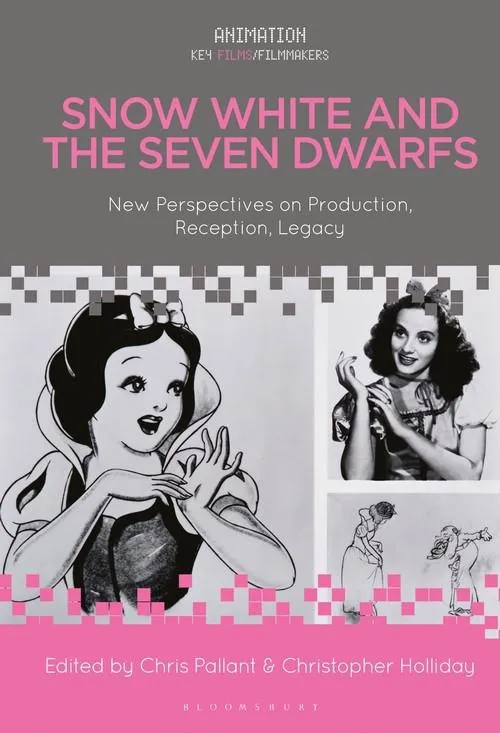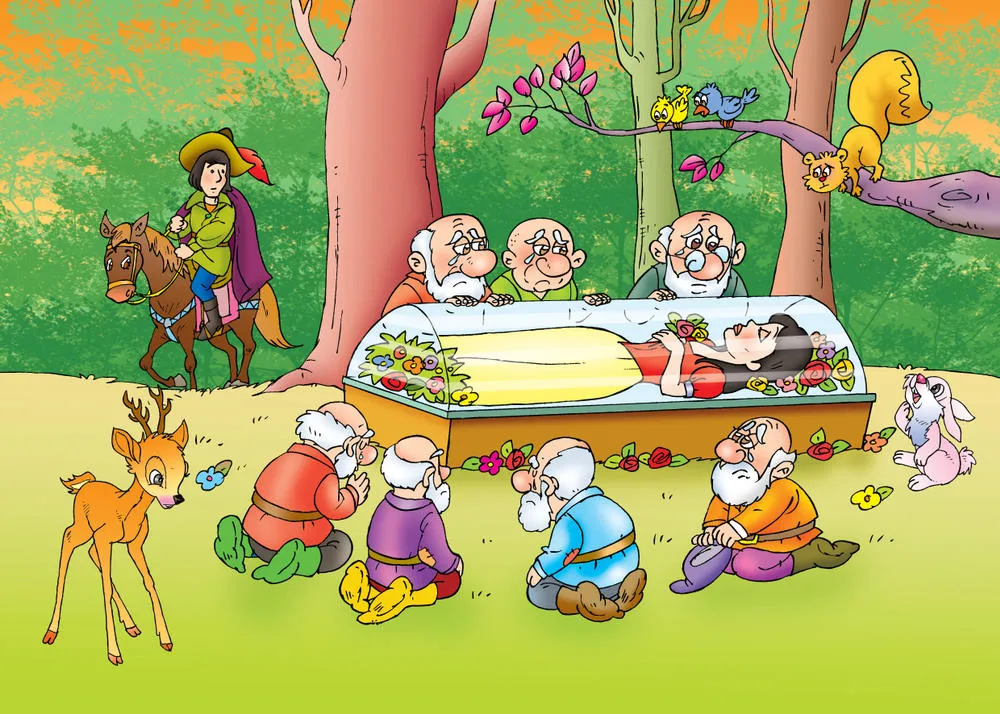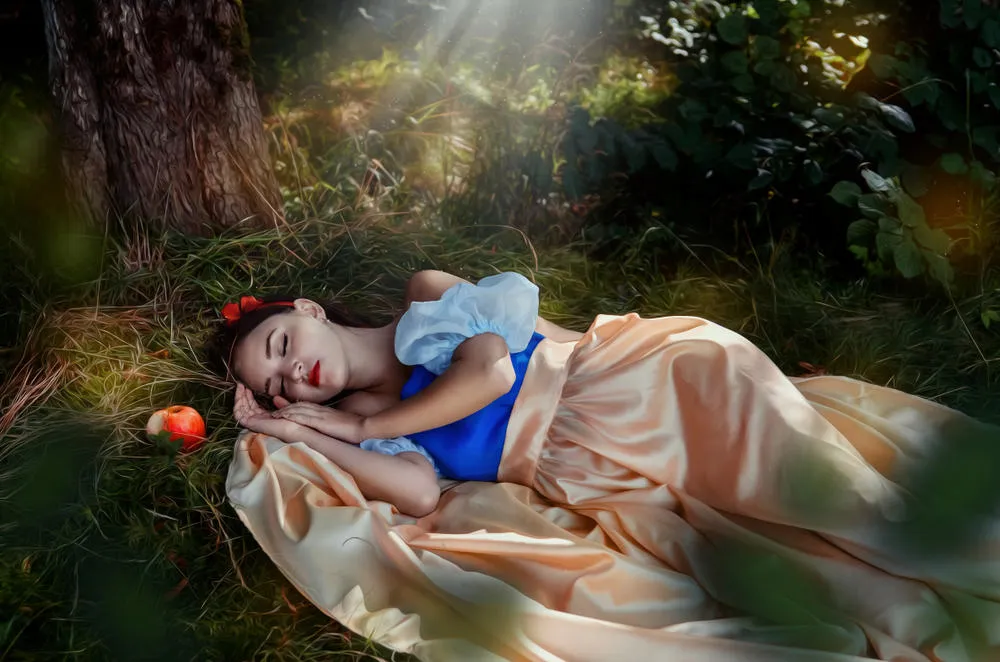08 February 2021
Snow White's cultural legacy explored in new book
A new book exploring the cultural legacy and influence of Snow White has been published, co-authored by Dr Christopher Holliday of Liberal Arts and Film Studies.

Snow White and the Seven Dwarfs: New Perspectives on Production, Reception, Legacy, co-edited by Dr Chris Pallant, explores the enduring qualities that have defined the film’s central place within the history of global animation.
Based on the German fairy tale by the Brothers Grimm, the movie was the first feature-length animated film produced by the Disney Studio and announced the animated cartoon as an industrial art form. Disney's landmark version not only set in motion the Golden Age of the Hollywood cartoon, but has continued to stand as an international sensation, prompting multiple revisions and remakes. The book reflects upon its pioneering use of technology and contributions to animation's visual style, the film's reception within an American context, and its status as a global cultural phenomenon.
In his own words, Dr Holliday describes various areas of the book’s chapters.
What do we know about Snow White’s global appeal? What are its endearing qualities?
As the first feature-length cel-animated film produced by the Walt Disney Studio, Snow White and the Seven Dwarfs is one of those landmark films that, perhaps expectedly, typically crops up in numerous popular histories of the Disney studio, if not animation as an entertaining art form.
But despite the film’s evident cultural longevity, influence and legacy, there is a sense in which this same popularity has kind of clouded the precise details of its own significance. There is so much to explore about the production of the film, its distribution and exhibition both in the U.S. and within a number of national cinemas, and the extent to which subsequent adaptations of the story really use Disney’s cartoon as a stylistic benchmark.
We learn in the book how Disney’s version of the Brothers Grimm’s original fairy tale set in motion the Golden Age of the Hollywood cartoon in the 1930s, and the ways in which it established a dominant aesthetic template for Disney Feature Animation that still holds sway today. We learn about the technologies used to bring its animated images to life, the merchandising and marketing strategies of this Disney classic, and the film’s contribution to traditions in the musical and fairy-tale. Snow White’s reach is truly international, and the book also examines the many multimedia adaptations of Disney’s fairy tale by looking at its afterlives in China, France, Brazil, Belgium, the Netherlands, Spain and Turkey.
This collection therefore seeks to do justice to both Snow White’s cultural significance and its historical prominence within international film history, reflecting on the timeless of a film whose values, morality and music seems to be re-discovered with each passing decade. The fact that the book comes so soon after its 80th anniversary, and that we are still finding new angles and discovering new elements of its popularity, perhaps tells its own story.

How has it kept its global appeal through the decades? How has it managed to undergo multiple remakes?
When we began the process of thinking through the film’s influence and legacy as “the fairest of them all,” we had little idea that there had been so many international adaptations. The volume was staggering. Disney’s Snow White has really held onto its cultural purchase, and we quickly realised that its appeal has really extended beyond Hollywood in ways that pulled together a number of writers across the world, who contributed chapters contained in the book on what Snow White means to them. This includes the film’s circulation within cinemas, naturally, but also its contemporary recuperation by LGBTQ groups and other marginalised communities across certain social media platforms. Of course, there are also industrial reasons why the film has remained so culturally visible.
The clever marketing of the film by Disney as its signature animated feature is difficult to ignore, and this important note is something we flag up in the book’s introduction. Since its initial theatrical run, Snow White has been re-released in cinemas on multiple occasions and was the first video in the Walt Disney Masterpiece Collection. However, this only tells part of the story. The film’s effortless movement through history and the ways in which audiences continually discover its narrative, themes, characters and even soundtrack suggests there is something else at play here beyond simple recognisability.
The Classic Disney values are particularly embodied by the structure and story of Snow White, and many of the formulaic elements related to Disney’s sentimental mode of storytelling, appealing characters and memorably musical numbers can all remarkably be traced back to the studio’s very first feature film.

What other things has it influenced in popular culture?
References to Snow White seem to continually appear across a number of multi-media forms. The 1980 comedy 9 to 5 has an entire sequence in homage to the film, as does Woody Allen’s Annie Hall. It’s not hard to find numerous parodies, both at the time and today, that take their inspiration from Disney’s adaptation. In the 1940s and 1950s, rival studios like Warner Brothers quickly parodied the film’s visual style and characters, while more recently irreverent comedies like the computer-animated Shrek take aim at some of its storytelling conventions with a degree of affection.
From fantasy films like Mirror, Mirror to adaptations like Snow White and the Huntsman, live-action cinema can’t get enough of the film either, judging by the number of Hollywood productions that remain fascinated by the Snow White mythology. Among its vast tie-in merchandise too, there have been videogames, theme park rides and now mobile apps all devoted to elements of the film. Snow White herself even appears in Disney’s 2018 feature film Ralph Breaks the Internet, thereby bringing the character right up to date with the Internet and digital age. Perhaps significantly, the majority of ‘Snow White’ adaptations around today take as their inspiration not the Grimms’ original fairy-tale, but Disney’s landmark Snow White, such is the iconicity of elements its characters (including the design of the dwarves), and the power of its soundtrack.
What has been your favourite version and why?
The book takes as its focus the 1937 Disney cartoon, and uses that as a springboard to acknowledge its extensive international movement, not just in terms of parodies and pastiches, but the way in which the film has been dubbed, cut and edited in a multitude of countries. I’d say there are two memorable, rather than favourite, versions that stick out for wildly different reasons as a result of research conducted for the book. While not a ‘straight’ adaptation, the first is the 2001 computer-animated film Shrek – produced by Disney’s rival studio DreamWorks that remains headed by ex-Disney chairman Jeffrey Katzenberg.
Shrek fully embraces its highly irreverent tone as a way to dismantle the Disney story, not just by citing scenes from the original cartoon but also targeting its use across Disney’s vast media empire. Another version that sticks in my mind for the wrong reasons is the rarely seen Coal Black and de Sebben Dwarfs from director Bob Clampett, a highly controversial retelling from 1943 that combines aspects of the Disney story with incredibly problematic portrayals of African identity. This jazz-based parody of Disney’s Snow White is one of the so-called “Censored Eleven,” a group of Warner Brothers cartoons that have been removed from circulation due to their insensitive and offensive content. Coal Black and de Sebben Dwarfs really brings into focus animation’s racist history via its frequent turn to ethnic stereotypes and derogatory blackface caricatures. It is important to acknowledge – as we do in the book – the very real presence of these films within the story of Hollywood animation – they serve a vital archaeological function that allow us to dig deep into unacceptable images as they masqueraded as popular entertainment. It’s also important not consign these cartoons to the past as simply historical texts, or as relics of a bygone era, but rather work through and challenge their imagery in ways that do not ignore the racism of the form, but rather confront it head on. This cartoon is far from a favourite. How can it be? But after Disney’s landmark Snow White, it’s perhaps one of the most important versions of the tale that has existed.
To purchase the book, click here: https://www.bloomsbury.com/au/snow-white-and-the-seven-dwarfs-9781501351228/


